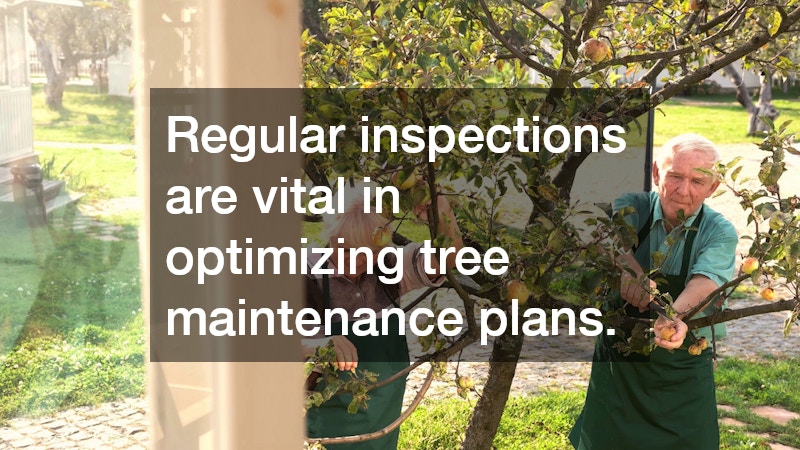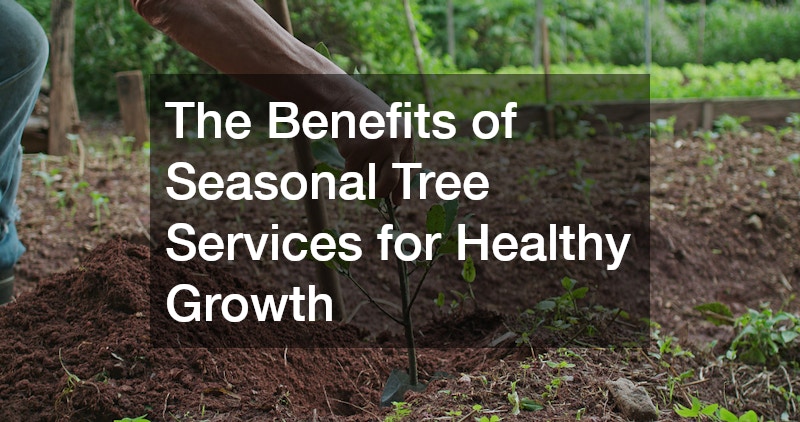Trees, like all living organisms, have specific cyclical needs that must be met to thrive throughout the year. Seasonal tree services play a crucial role in maintaining the health and vitality of trees by addressing these needs effectively, ensuring they remain robust and resilient.
The practice of aligning tree care practices with seasonal changes enables a proactive approach to tree maintenance, preventing problems before they escalate. Whether it’s managing growth, combating pests, or enhancing soil conditions, addressing these factors seasonally can lead to healthier trees in the long run.
Understanding the significance of seasonal tree services sheds light on how critical it is to cater to the unique demands imposed by each season. This article aims to illustrate the myriad benefits that such services offer, promoting sustainable growth and longevity in trees.
What are the Different Types of Seasonal Tree Services?
Pruning and Trimming Services
Pruning and trimming are essential tree services that vary in their timing and techniques based on the season. Performing these tasks during the appropriate season helps in controlling unwanted growth, enhancing the tree’s structure, and preventing diseases, ultimately aiding in healthy growth.
For instance, many trees benefit from dormant season pruning when the absence of leaves allows for better disease prevention and structural assessment. Likewise, trimming in spring ensures that trees enter the growing season free of deadwood that could impede their development.
The cycle of growth and dormancy creates windows of opportunity where pruning and trimming can be most effective, reducing stress on the trees and promoting robust growth. Thus, strategic seasonal management through pruning and trimming is a cornerstone of tree health.
Fertilization and Soil Management
Fertilization and soil management are crucial components in the seasonal care of trees. These practices ensure that trees receive essential nutrients when they are most needed, particularly during their active growth phases.
Applying the right fertilizer at the right time can significantly impact a tree’s health, especially in nutrient-depleted soils. Seasonal tests of soil conditions can guide these applications, optimizing tree growth while minimizing the risk of nutrient run-off or damage.
Managing soil quality not only helps in fostering stronger root systems but also in combating diseases and pests more effectively. Therefore, thoughtful fertilization and strategic soil management remain pivotal to the healthy growth and long-term sustainability of trees.
How Do Seasonal Changes Affect Tree Health?
Impact of Weather on Growth and Disease
Weather conditions, an inherent part of seasons, can significantly dictate the health trajectory of trees. Changing conditions bring variations in moisture levels, temperatures, and sunlight, all of which directly impact tree growth cycles and their susceptibility to disease.
For instance, excessive rain in spring can promote unwanted growth and fungal diseases without proper intervention. Meanwhile, harsh winters can lead to tree dormancy and potential vulnerabilities that must be managed through appropriate seasonal tree services.
The role of seasonal services, therefore, is to mitigate these impacts, ensuring that trees remain healthy amidst changing weather conditions. By carefully timing interventions, such services safeguard trees against adverse environmental effects, promoting resilient growth.
Adaptation Strategies for Trees
Adaptation strategies are key to helping trees withstand the challenges posed by seasonal changes. Through seasonal services, trees are equipped with the necessary defenses to handle environmental stressors such as droughts, frost, and heatwaves.
One such adaptation strategy involves selecting tree species with natural endurance for particular climates or enhancing their resilience through careful seasonal management. The goal is to maintain health while encouraging natural adaptability to changing needs throughout the year.
Strategic interventions, including adjusting watering schedules and protective measures against pests, bolster trees’ capacity to thrive. This adaptive approach ensures that trees not only survive but flourish with each passing season.
Why is Regular Inspection Important?
Identifying Early Signs of Issues
Regular inspections are fundamental in identifying the first indicators of potential issues that could affect tree health. Early detection of diseases, pest infestations, or structural problems allows for swift action which can prevent long-term damage or loss.
Pioneering these inspections through a seasonal lens grants insights into subtle shifts in tree health. This informed vigilance ensures that interventions can be applied promptly to mitigate risks effectively, safeguarding tree integrity.
Preventive care through regular inspections reduces the chances of emergencies that might require drastic measures. In doing so, trees benefit from consistent care tailored to their seasonal needs, supporting sustained health.
Optimizing Tree Maintenance Plans
Regular inspections are vital in optimizing tree maintenance plans by taking into account seasonal challenges and advantages. Such tailored approaches mean that care strategies can be adjusted promptly in response to real-time observations.
These plans rectify any deficiencies noted during inspections, ensuring that each tree receives the specific interventions it requires. Adjustments made on a seasonal basis can include modifications in pruning schedules, pest management, or nutrient replenishment.
Seasonal tree services are indispensable tools in the successful growth and longevity of trees. Through practices like pruning, fertilization, and regular inspections, trees receive customized care that addresses their unique seasonal requirements.
Understanding the cyclical nature of trees and aligning care practices with these cycles leads to healthier, more vibrant trees. Seasonal tree services ensure that trees not only survive but thrive, making them an integral part of maintaining a balanced and sustainable environment.



